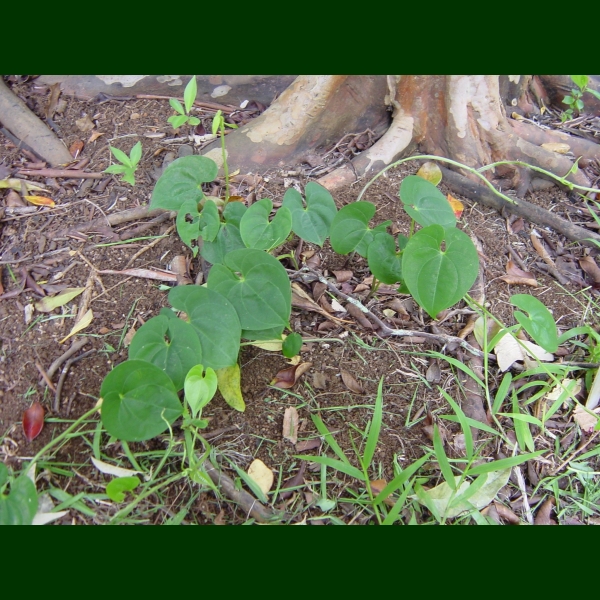 Hawaiian Name(s): uhi
Hawaiian Name(s): uhiScientific Name: Dioscorea alata
Vernacular Name: yam
Family: Dioscoreaceae
Status: Polynesian introduction (not naturalized)
Authority: L.
Description: Perennial herbs, arising from tuberous rootstocks.
Habitat Cultivated in dry to mesic areas. Apparently persists after abandonment but is not considered naturalized (Wagner et al. 1990:1437).
Medicines: Uhi or uhi ke‘oke‘o, is useful for treating ma‘i uiha a ikiiki i ka wela o ke kino a kahe nui ka hou i na wa a pau (weariness from a burning heat of the body with profuse sweating all the time). To treat, the flesh of ‘uhi ke‘oke‘o and kikawaioa (Christella cyatheoides) are mixed with spring water. Once blended well, drink mixture once in the morning and again in the evening (Chun 1994:247–248).
Non Medicinal Uses: Uhi tubers are steamed and eaten, but are too mealy to make a good paste (like poi) (Handy et al. 1972:182; Malo 1951:42–43).
Specific gravity of wood: n/a
Famous Locations: Large yam field (pa'uhi) located in an area surrounded by what are now Beretania, King, Nu‘uanu and Alakea streets. Planted by Kamehameha the Great in 1810, intended for providing visiting ships with food.
Mele:
`Ōlelo Noeau:
Dye Color and Parts:
Kino lau:
Location on Bishop Museum Kalihi Campus:
Propagation Information: (Handy et al. 1972:179–180).
